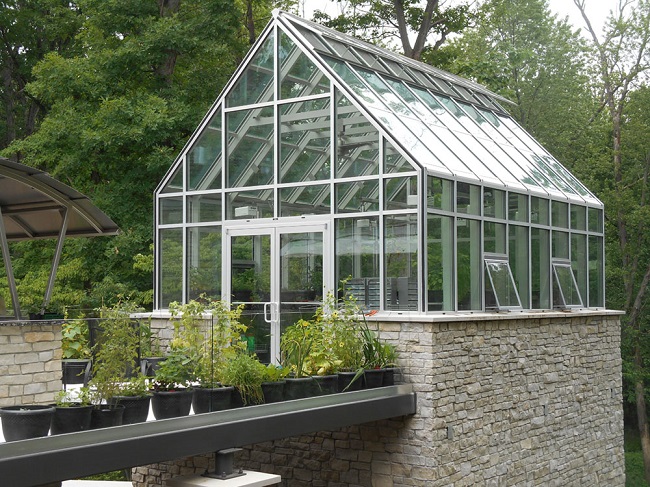
If you’re reading this article, chances are that you at least have a mild interest in gardening and horticulture. You may already own a greenhouse, or you’ve been giving serious thought to purchasing one. If you’re in the latter category—the category where you think it’d be nice to have a greenhouse on your property, but you’re not quite sure how to realize that dream—read on. This is a simple, easy to understand guide about what you need to consider when building a greenhouse.
Size Matters
The smallest hobby greenhouses are usually 6×4 feet. However, we recommend getting at least a 6×8 foot greenhouse. But keep in mind that you get what you pay for in a greenhouse, and hobby greenhouses of this size can feel cramped and be difficult to maneuver in. Remember, you not only need to account for the space your plants need to grow, but you also need to account for the space you take up when you visit the greenhouse to fertilize, harvest, or simply admire your hard work. Most people that start with small, hobby greenhouses quickly outgrow them and begin looking for a larger and more elegant structure.
If you have the budget, we recommend getting an 8×12 foot or larger greenhouse or even consider building a greenhouse that is attached to your home. Attached greenhouses offer convenience and add aesthetic beauty to your home. The extra space in these larger greenhouses helps you avoid feeling cramped while you are working in them, and it gives you the extra room to experiment with different types of plants. You don’t have to fill a greenhouse up with plants the moment it’s built. Start small and leave some empty space. Once you’ve mastered growing a few plants, you’ll already have the space to expand.
Structure
Pay attention to the materials used in your greenhouse. You’ll have a choice between glass or polycarbonate as the main component of your greenhouse. While glass is great for light transmission, you need double-paned glass to achieve a reasonable energy efficiency. Polycarbonate is typically less expensive and much more durable than glass, but it does not transmit light as effectively.
Once the materials are selected, there are two ways a greenhouse can be built. Your greenhouse can be freestanding, or it can be attached to an existing structure (generally a house or garage wall). A freestanding greenhouse typically costs more to initially install, but if you install it on level ground and in an area that receives plenty of sunlight, it can be placed anywhere on your property. Because a freestanding greenhouse has glass (or polycarbonate) walls on all four sides, it receives more direct sunlight than an attached greenhouse.
A special note for growers in cold, northern climates. We would recommend purchasing an attached greenhouse for your first greenhouse. While freestanding greenhouses do receive more light than attached greenhouses, they also cost more to heat and are less energy efficient. Plus, growing year-round seems great until it’s ten below zero and you must bundle up and walk outside just to check on your tomatoes.
Location
Greenhouses love sunlight, but overexposure to sun can be just as lethal to plants as underexposure. While the south side of a home typically gets the most exposure to sun, this may not be optimal for your plants, especially if you’re using a glass greenhouse. Although you can place a shade cover over a glass greenhouse to minimize light intake, installing your greenhouse to the east or west sides of a home can minimize direct sun exposure. The only ironclad rule is to not install a greenhouse on the northern side of a home.
Keep in mind that a greenhouse is more than just a structure. Climate control devices and grow lights commonly require electricity. We also recommend having easy access to running water. Nothing ruins gardening faster than lugging a heavy bucket of water around to water plants.
Do I Need a Building Permit?
If you live in a dense, urban area or in a historic neighborhood, you need to check with your local government for building regulations. Attached greenhouses are typically considered additions, like a walk-out patio or a sunroom and may require a building permit depending on local laws. If you are a part of a Homeowners Association, be sure that you consult with the association’s president before beginning construction on a new greenhouse. While most Homeowners Associations are happy to have more green in their neighborhood, some heavily restrict additions to your property.
Joshua Nichols is the My Garden & Greenhouse Associate Editor
Photo provided by Arcadia Glasshouse.
Related Articles & Free Email Newsletter Sign Up
Curious About CBD? Here’s What it Can and Cannot Do for You
How to Extend your Vegetable Harvest into Winter
Why Proper Ventilation Helps Create a Healthy Greenhouse




Comment here